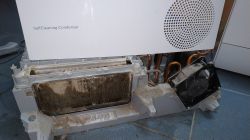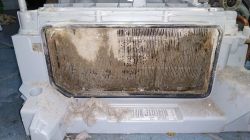Is it important that the engine is inverter?

Czy wolisz polską wersję strony elektroda?
Nie, dziękuję Przekieruj mnie tamZdzichu wrote:Is it important that the engine is inverter?
Zdzichu wrote:AutoClean technology, which was also recommended to me in the store.
Zdzichu wrote:I'm looking for one and my wife says that BOSCH WQG233CRPL is the prettiest
michael1986 wrote:Can anyone tell me how much this service costs approximately?
michael1986 wrote:Is there also such mess under the casing in a classic dryer without a pump and after some time everything has to be disassembled anyway?
michael1986 wrote:Are there heaters in this exchanger?
mrice wrote:michael1986 wrote:Is there also such mess under the casing in a classic dryer without a pump and after some time everything has to be disassembled anyway?
The mess is the same, only it takes about 30-45 minutes to clean it and you don't have to tear the equipment apart.
michael1986 wrote:But such cleaning involves not only removing the exchanger and rinsing it with water, but also removing the casing and cleaning everything with a vacuum cleaner?
michael1986 wrote:As I understand it, there is no access to the heaters without removing the casing?
michael1986 wrote:Does a dryer without a heat pump cause lint to fall onto the floor where it is placed?
michael1986 wrote:Is it really worth buying such a device if the prices have equalized and even those with a pump are cheaper?
mrice wrote:I have already written, it is like an eternal fight between no PB and ON.
I am not concerned about power consumption, and the kWh consumption per washing cycle is not much higher than the pump (not to be confused with the energy consumption often given in the device data, i.e. kWh itself).
mrice wrote:To assess this factually, we need photos of the condenser and evaporator from the front, from the back and above, and with good lighting. Additionally, please write how often the dryer is used.
marcinpdt wrote:I'm looking for my first hair dryer. Can anyone on this forum still tell me that it is better to buy a dryer without a heat pump than with a heat pump, since the cheapest one is from Bosch:
- with heat pump costs WTH85V0EPL Serie 4 61.3cm 8kg PLN 1,918
- without Bosch WTG86401PL heat pump 8 kg PLN 2,100
mrice wrote:Zdzichu wrote:AutoClean technology, which was also recommended to me in the store.
Out of curiosity, what was the justification for this?
Borutka wrote:Of course, the photo can be taken without disassembling it.
Zdzichu wrote:I was told in the store that those with AutoClean are the ones that break down and those without AutoClean don't break down.
Zdzichu wrote:And what is a man supposed to do now? Should I buy a fancy dryer from AutoClean or listen to the lady in the store?
Borutka wrote:Previously, there was some, I don't remember the name, that was installed in the 6 and 8 series and there is a lot about it on the Internet.
Borutka wrote:Of course, the condition is to rinse the filter after each drying.



mrice wrote:Borutka wrote:Of course, the photo can be taken without disassembling it.
And at this point, I'm sorry, but there's nothing else to talk about.
mrice wrote:
one of the Bosch pumps with a self-cleaning system when it was cleaned after a year and a half of intensive use:
Borutka wrote:I assume that if there are no (simply no) lumps at the beginning of the road, it can only get better.
Borutka wrote:Perhaps other items are rinsed as well.
Borutka wrote:In addition to total neglect, the photos also show cleaning with a hammer
mrice wrote:E-number of your machine, I'll look into the papers and we'll see.
michael1986 wrote:And now, when electricity prices are in great doubt and it is cheaper with a heat pump, it may turn out that it is cheaper to buy a dryer with a heat pump every 3-4 years than to buy an "everlasting" heater.
marcinpdt wrote:I noticed that in many stores WTG86401PL is written that it has an inverter motor. Could this be true?
michael1986 wrote:With a pump, your electricity consumption will be on average 1/3 lower than with a heater.And now that electricity prices are in great question
